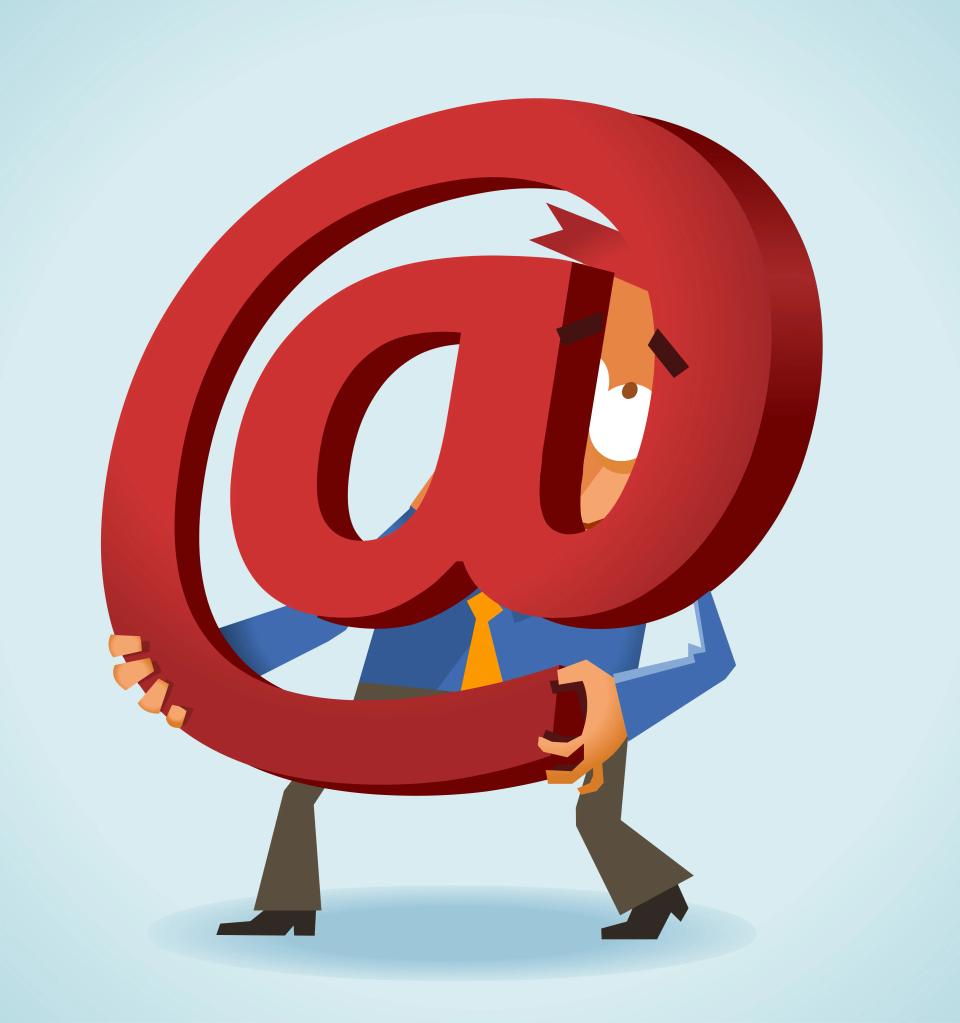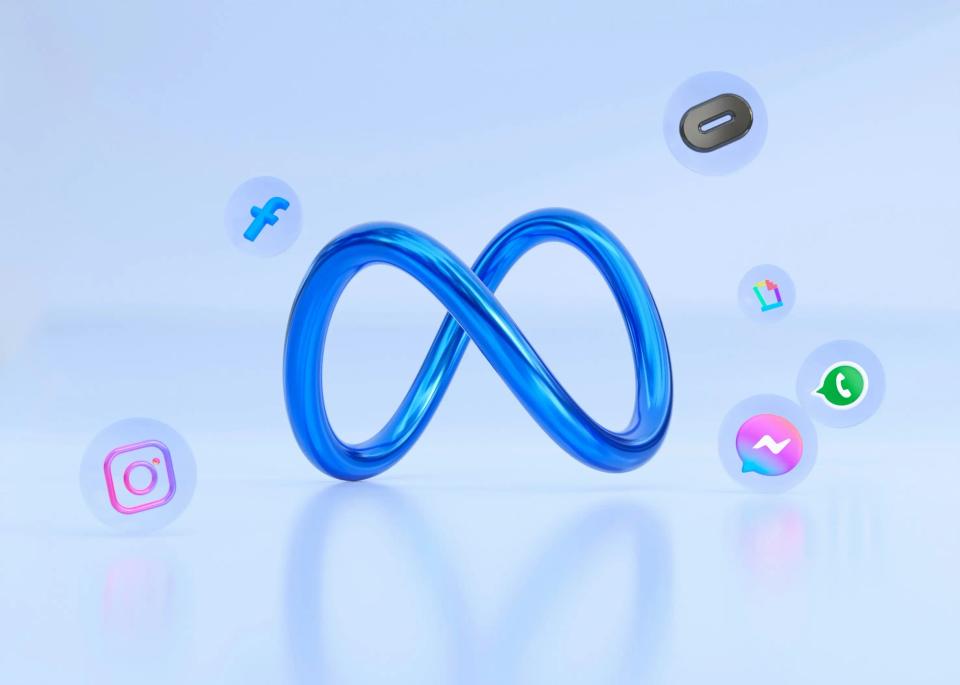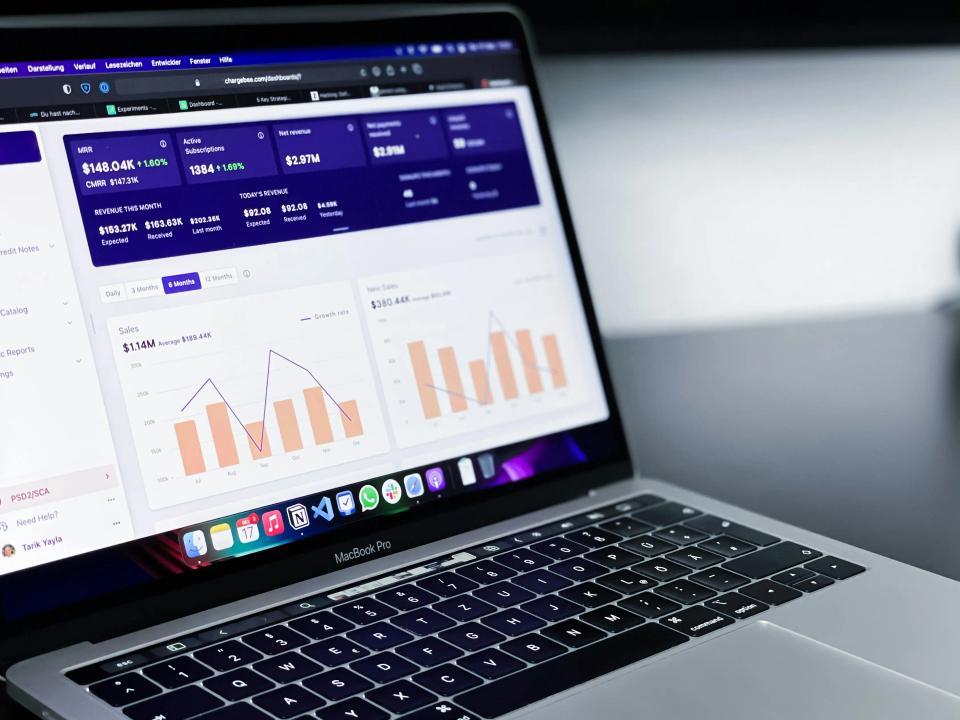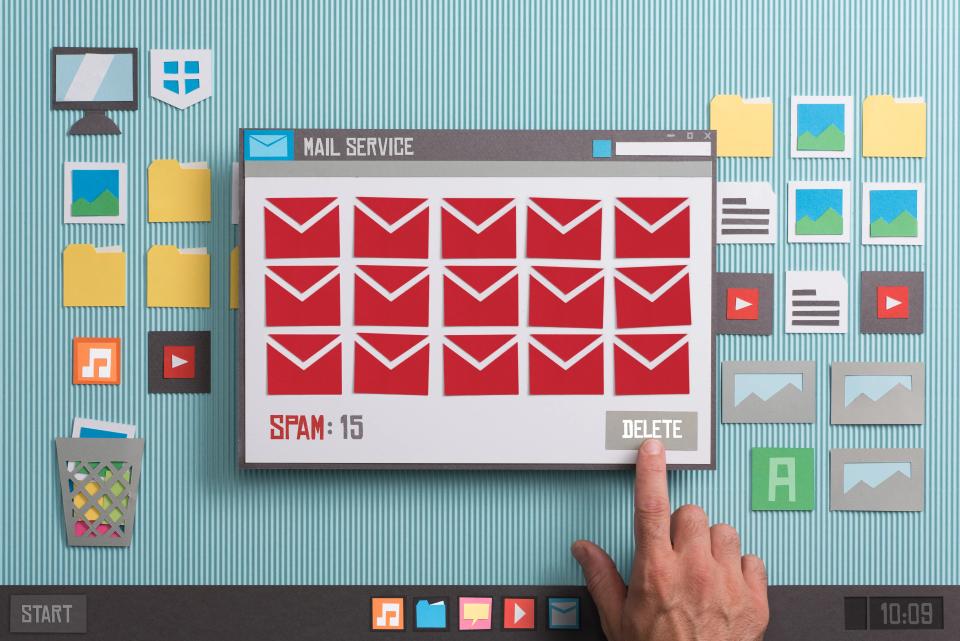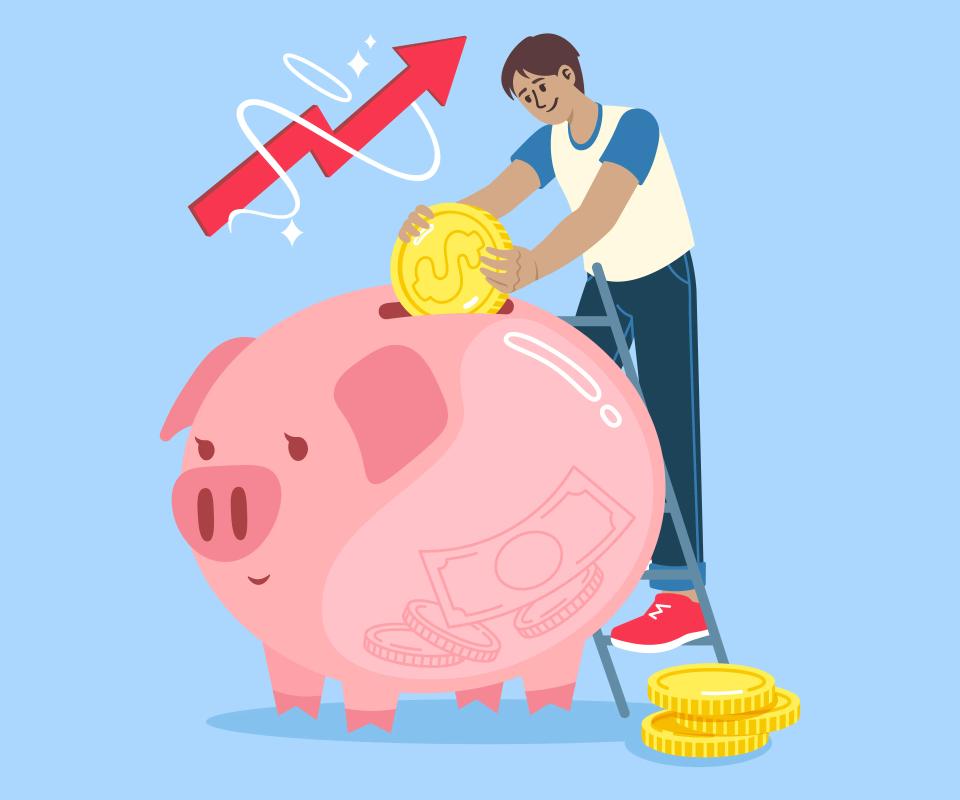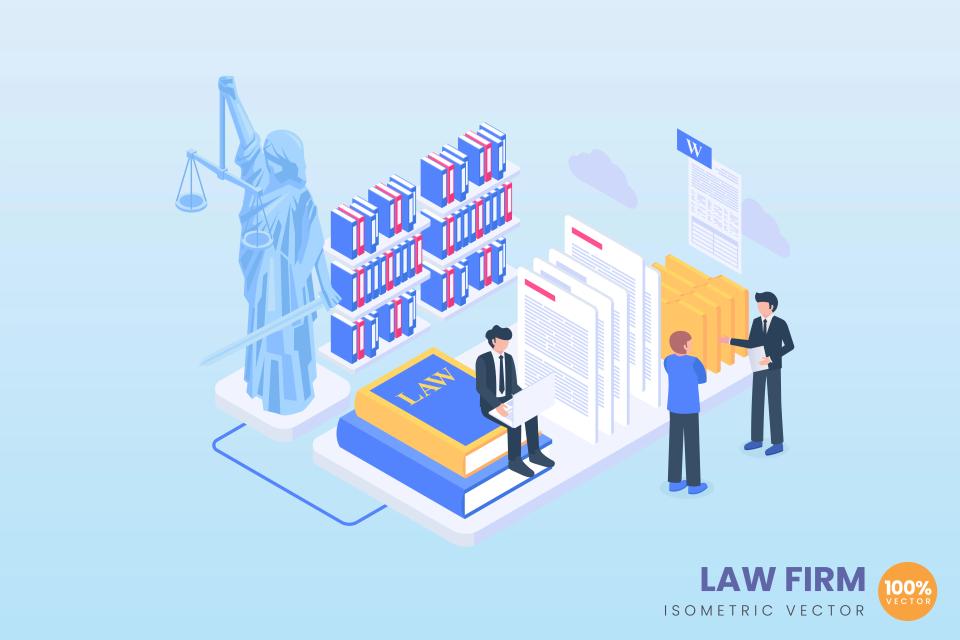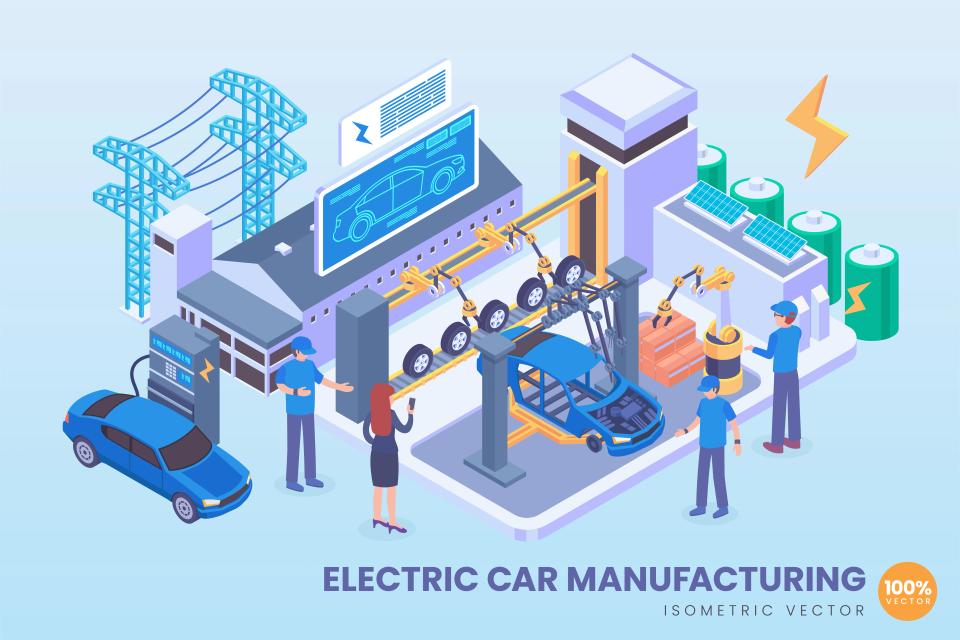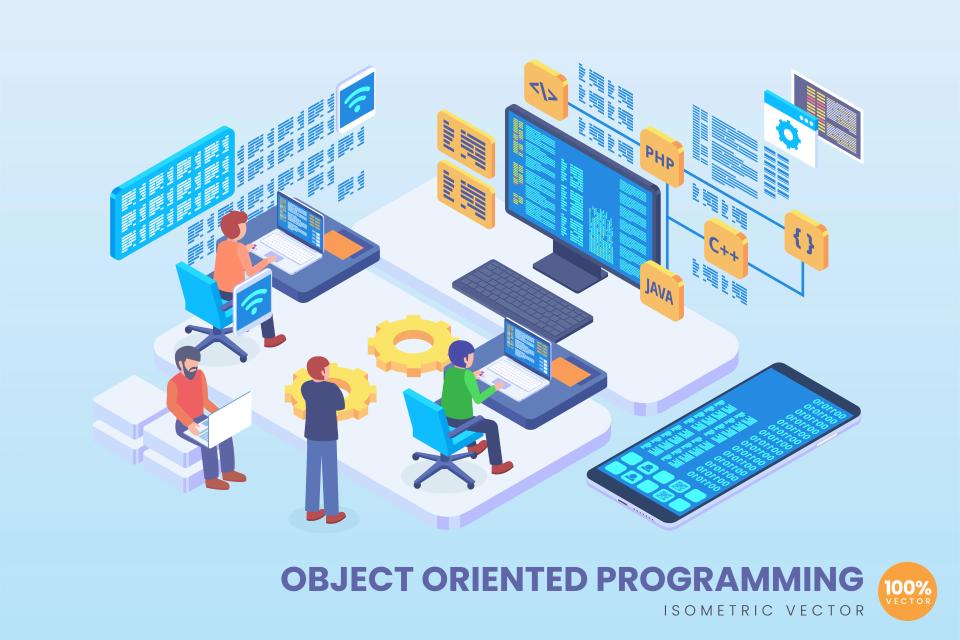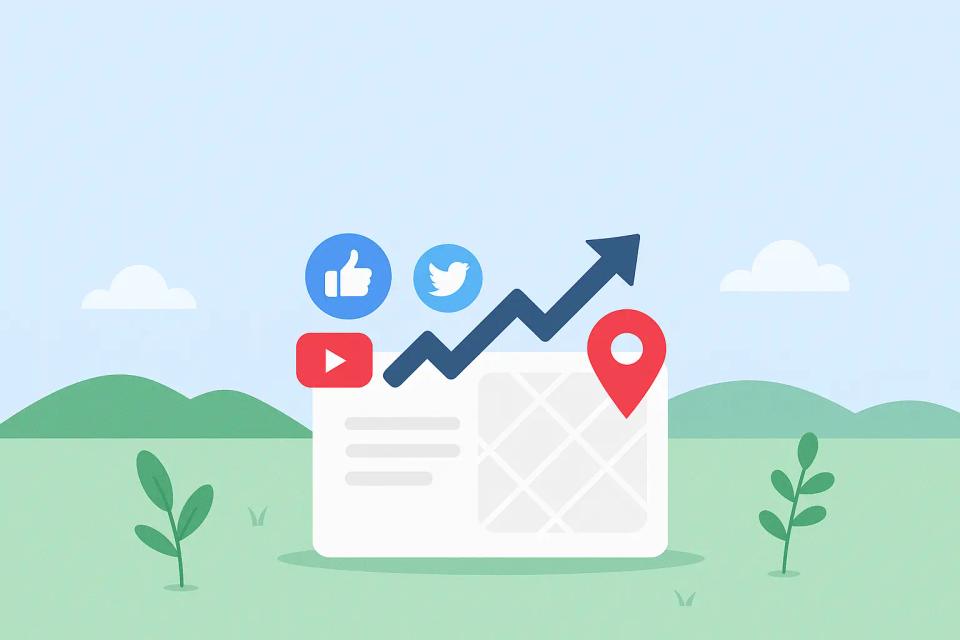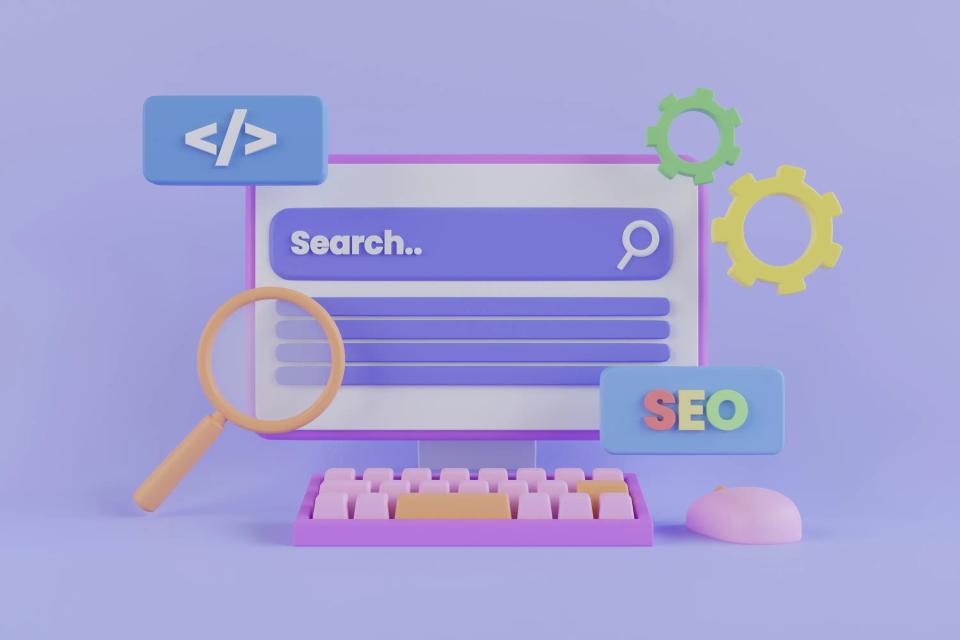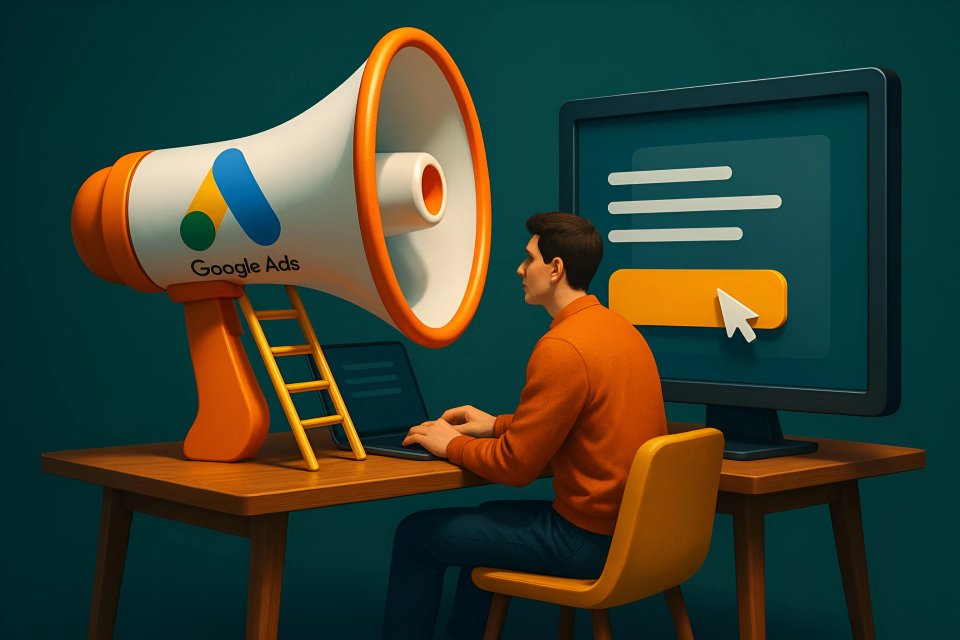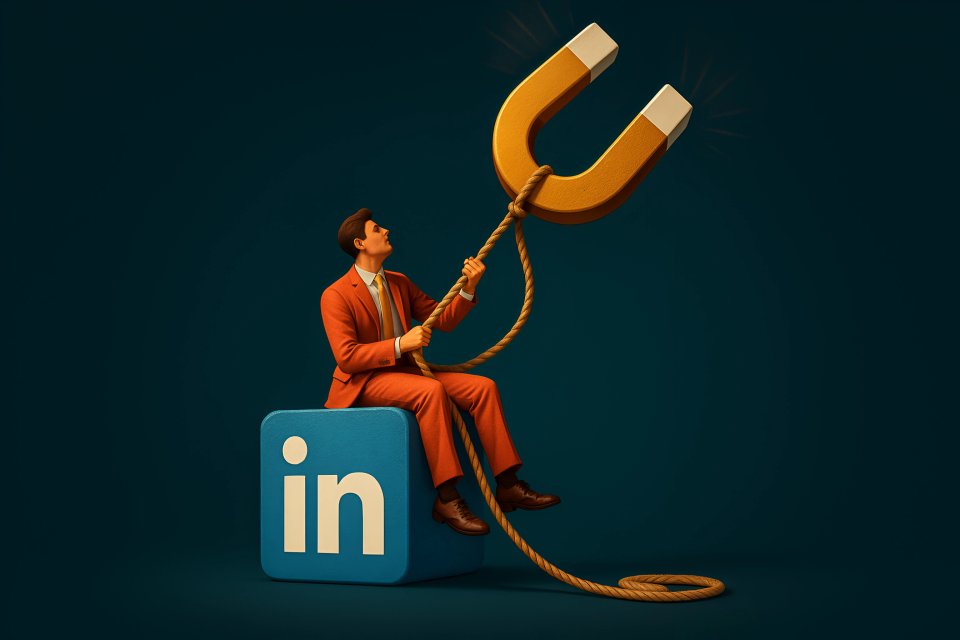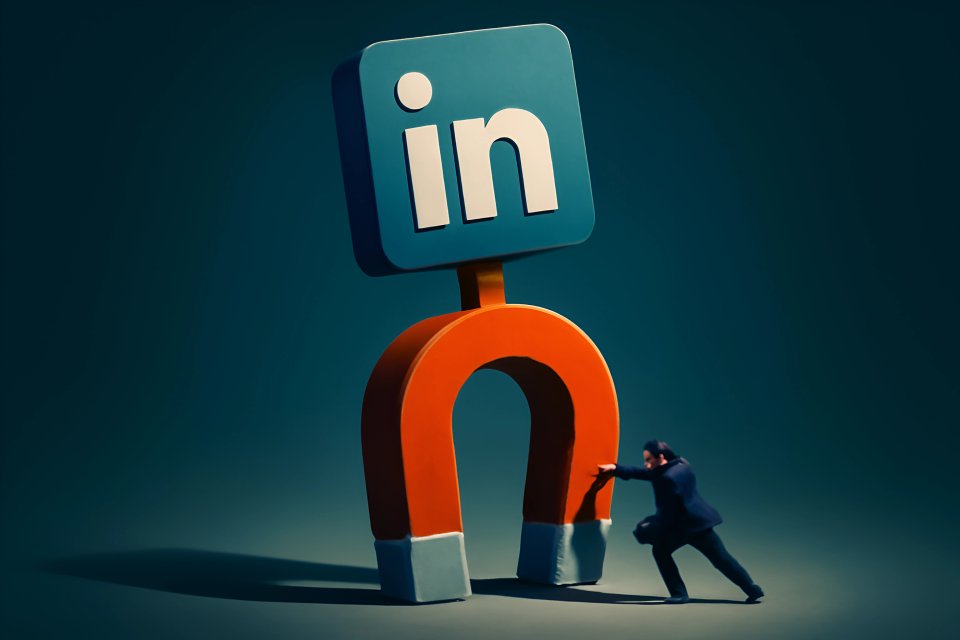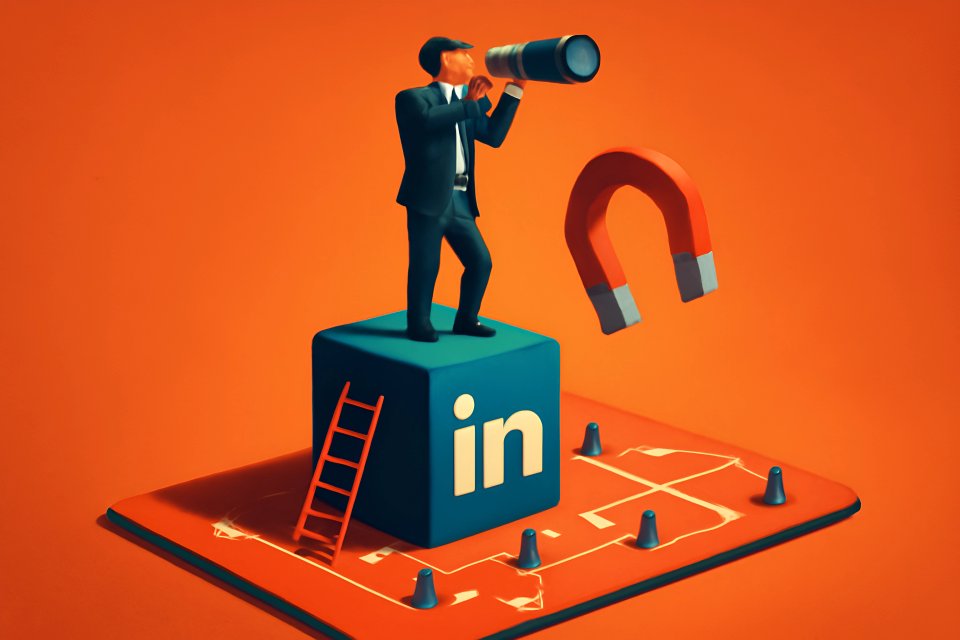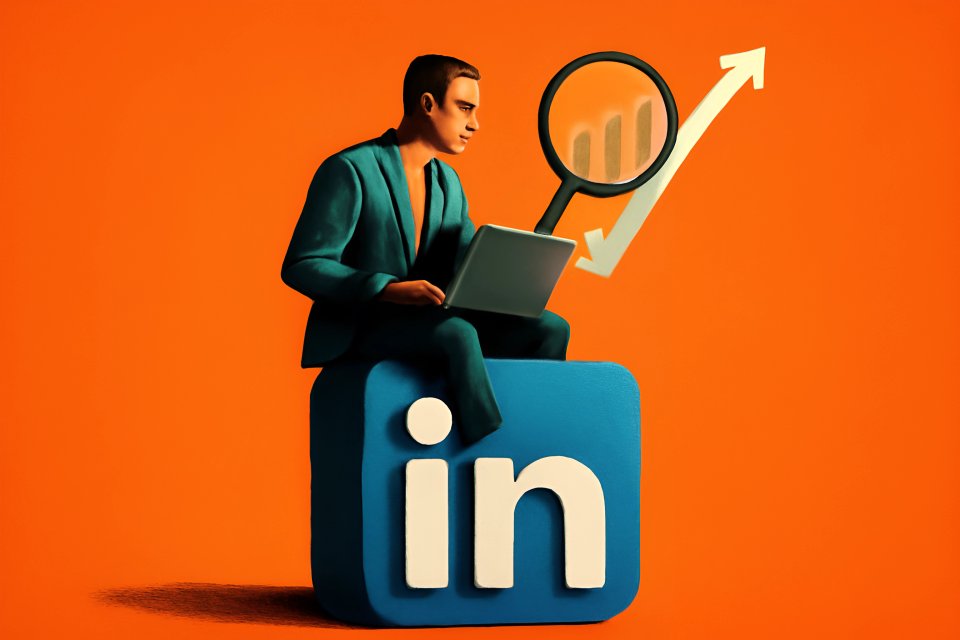Tired of your B2B emails vanishing into the digital void? You spend hours crafting messages, only to be met with deafening silence. It’s frustrating, isn't it? But what if I told you that email, even in our hyper-connected world, remains an absolute titan for B2B lead generation? It’s true. When wielded correctly, email offers a direct, powerful line to the decision-makers you _need_ to reach. In fact, a staggering 59% of B2B marketers rank email as their highest revenue-generating channel.
The problem isn't email itself; it's often the approach. Many businesses struggle with abysmal open rates, zero replies, and the dreaded spam filter. They find it impossible to cut through the noise and connect with the right contacts. This is where so many promising outreach efforts die a slow, painful death. But it doesn’t have to be your story.
This post is your battle plan. We’re not talking about flimsy theories; we’re diving deep into proven, step-by-step email outreach strategies for B2B leads that actually _work_. At CaptivateClick, we've dedicated over 15 years to helping businesses like yours transform their outreach from hopeful shots in the dark to strategic, results-driven campaigns that build real connections and, more importantly, convert. You'll learn how to define your ideal targets, build a laser-focused prospect list, craft emails that demand attention, personalize at scale, master the follow-up, navigate technical hurdles, and continuously optimize for peak performance. Get ready to turn your email outreach into a lead-generating machine.
Laying the Groundwork – Strategy & Preparation
Before you even think about hitting "send," you need a rock-solid foundation. Skipping this crucial first step is like trying to build a skyscraper on quicksand – doomed from the start. This is where you define who you’re talking to, what you want to achieve, and the rules of engagement.
Defining Your Ideal Customer Profile (ICP) & Buyer Personas
Who are you _really_ trying to reach? If your answer is "everyone," you're aiming at no one. Defining your Ideal Customer Profile (ICP) and detailed buyer personas is the bedrock of any successful B2B email outreach. Think about it: understanding your audience is fundamental to any powerful brand strategy, and email is no different. You need to dig deep into firmographics like industry, company size, and location, but also into the psychographics – their biggest pain points, their most ambitious goals, and the nitty-gritty of their decision-making process.
Crafting a strong ICP involves more than just guesswork; it requires analyzing firmographic data and even technographic signals, such as the tools your ideal customers already use, as highlighted by research from Cognism on ICP development. Furthermore, HubSpot’s ICP framework powerfully emphasizes aligning your sales and marketing teams to pinpoint companies that not only fit your solution but also offer scalable growth potential. Imagine the power of knowing exactly who can benefit most from what you offer, and who has the authority and budget to say "yes!"
This deep understanding allows you to tailor your messaging so precisely that it resonates on a personal level, making your prospects feel understood. You're no longer just another email in their crowded inbox; you're a potential solution to a pressing problem. This targeted approach is what separates spam from valuable communication.
Setting Clear Campaign Goals & KPIs
What’s the point of all this effort if you don’t know what success looks like? Before launching your B2B email outreach, you must define clear, measurable goals. Are you aiming to book more meetings, drive demo requests, grow your subscriber list, or make direct sales? Your goals will dictate your entire strategy, from the tone of your emails to your call to action.
Once your goals are set, you need Key Performance Indicators (KPIs) to track your progress. These are your vital signs. Keep a close eye on open rates, click-through rates (CTRs), reply rates, and ultimately, conversion rates – how many prospects take that desired next step. For context, average B2B email open rates hover around 15%, with click-through rates of 2.4%, according to B2B email marketing benchmarks from Stripo. Knowing these numbers helps you set realistic targets and identify areas for improvement.
Without clear goals and KPIs, you’re flying blind. You won’t know what’s working, what’s failing, or how to steer your campaign toward success. This data-driven approach ensures your efforts are focused and your resources are well spent, maximizing your return on investment.
Understanding Legal & Ethical Considerations (The Non-Negotiables)
In the rush to generate leads, don't ever overlook the legal and ethical guardrails. Regulations like GDPR (General Data Protection Regulation) in Europe and CAN-SPAM in the United States aren't just suggestions; they're laws with serious consequences for non-compliance. Understanding these rules is non-negotiable for any legitimate B2B email outreach.
The core principles revolve around permission, transparency, and respect for the recipient's inbox. For instance, as Ampersand MKE clarifies regarding GDPR vs. CAN-SPAM, GDPR generally mandates explicit opt-in consent for marketing emails, meaning pre-checked consent boxes are a major violation. CAN-SPAM, while more lenient on initial contact, still requires a clear way for recipients to opt-out, and that request must be honored promptly.
At CaptivateClick, we firmly believe that ethical outreach is the only way to build lasting trust and a positive brand reputation. Cutting corners here might offer short-term gains but will inevitably damage your sender reputation, your brand image, and your ability to connect with prospects in the long run. Always prioritize transparency, provide clear unsubscribe options, and ensure your contact information is readily available.
Building a High-Quality, Targeted Prospect List
Your email campaign is only as good as the list you send it to. A brilliantly crafted email sent to the wrong audience is a wasted effort. This step is all about precision: finding the right companies and the right people within those companies.
Identifying Your Prospects
Forget scattergun approaches. Your Ideal Customer Profile (ICP) is your compass here, guiding you to the businesses most likely to need your solution. LinkedIn, especially tools like Sales Navigator, is an absolute goldmine for identifying prospects based on industry, company size, job title, and even recent activity. Don't underestimate the power of joining relevant LinkedIn groups or scrutinizing company pages for key contacts; it's a core part of how we approach leveraging LinkedIn outreach for B2B lead generation as a complementary strategy.
Beyond LinkedIn, explore industry-specific databases and directories – often, these curated lists can provide a wealth of information. Company websites, particularly their "About Us" or "Team" pages, can also reveal key decision-makers. And never discount the value of professional networking, whether it's at virtual conferences or in-person events; a direct introduction can be incredibly powerful.
The goal is to build a list that isn't just large, but _relevant_. Quality trumps quantity every single time in B2B email outreach. A smaller, highly targeted list will always outperform a massive, generic one.
Finding Verified Email Addresses
Once you've identified your ideal prospects, the next challenge is finding their correct email addresses. This can be tricky, as people change roles and companies frequently. Using reliable methods to find and verify emails is crucial to avoid high bounce rates, which can severely damage your sender reputation.
There are numerous tools designed for email lookup and verification. Platforms like ZoomInfo leverage AI-driven databases to provide not just contact details but also intent signals, helping you understand which prospects are actively looking for solutions like yours, as noted by Mercury's overview of ZoomInfo. Similarly, tools such as Snov.io are recognized for their robust email verification capabilities and CRM integrations, which significantly help in reducing bounce rates and ensuring deliverability. While these tools are powerful, manual verification techniques, like checking company naming conventions or making educated guesses followed by verification, can also play a role.
The key takeaway is this: _always verify_. Sending emails to invalid addresses tells email service providers that you're not diligent with your list hygiene, increasing the chances of your legitimate emails landing in spam. A clean, verified list is essential for successful B2B email outreach.
Segmenting Your List for Maximum Relevance
Now that you have a list of verified prospects, resist the urge to send them all the same generic message. Segmentation is where the magic happens. By dividing your list into smaller, more homogenous groups, you can tailor your messaging for maximum impact. Why is this so critical? Because personalized campaigns can yield 30% higher open rates and 50% higher CTRs, and segmentation is the engine of that personalization.
Common segmentation criteria flow directly from your ICP and buyer persona research. You can segment by industry, job role, company size, specific pain points you've identified, or even their previous engagement with your brand. For example, the way you approach a startup CEO will be vastly different from how you address a department head in a large enterprise. Similarly, our strategies for cold email outreach for retail businesses are distinct from those tailored for manufacturing firms.
This level of targeting ensures that your email speaks directly to the recipient's unique context, challenges, and aspirations. It shows you've done your homework and aren't just blasting out a generic pitch. The more relevant your message, the higher your chances of engagement and, ultimately, conversion.
Crafting Compelling Emails That Get Opened & Read
Your prospect's inbox is a battlefield. Dozens, if not hundreds, of emails are vying for their attention every single day. To win this battle, your email needs to be more than just informative; it needs to be _compelling_. It needs to grab them by the collar and make them _want_ to read what you have to say.
The Subject Line: Your First Impression
Think of your subject line as the headline of an ad. It’s your one shot to make a powerful first impression and convince the recipient to open your email. Get it wrong, and your carefully crafted message ends up in the trash, unread. Research from Campaign Monitor on CoSchedule's A/B tests shows that subject lines with 50 characters or fewer can increase open rates by a significant 24%, so brevity is key, especially for mobile viewing.
Effective subject lines often leverage personalization (using their name or company), spark curiosity, create a sense of urgency (use this sparingly and genuinely), highlight a clear benefit, or use social proof. For example, instead of a bland `“Our Services”`, try `“John, idea to cut [Their Company Name]'s operational costs?”`. Avoid vague or overly salesy language that screams "spam." Test different approaches to see what resonates best with your specific audience.
Here's a quick comparison:
| Bad Subject Line | Good Subject Line (Benefit-Oriented & Personalized) |
|---|---|
| Meeting Request | Quick question about [Their Company]'s growth? |
| Our New Product | Sarah, solving [Their Pain Point]? |
| B2B Solutions Offer | Idea to boost [Their Industry] efficiency |
| Checking In | Following up on your recent [Achievement/Post] |
Remember, the goal is to be intriguing, relevant, and concise.
The Opening Line: Hook Them Immediately
You’ve got the open – fantastic! Now, you have mere seconds to hook them with your opening line. This is where you prove that your email isn't just another generic blast. The most effective way to do this is to show you've done your research.
Mention something specific about their company, their role, a recent achievement, a post they shared on LinkedIn, or a mutual connection. For example: `“Loved your recent article on AI in manufacturing, [Prospect Name]…”` or `“Saw that [Their Company] just secured new funding – congratulations!”`. This immediately signals that the email is tailored to them and not a mass mailing.
Avoid generic, self-serving openings like `“My name is…”` or `“I work for…”`. They don’t care about you (yet). They care about themselves and their problems. Your opening line must quickly bridge the gap between your existence and their interests.
The Body: Value Proposition & Relevance
Now for the heart of your email: the body. This is where you deliver your value proposition, but always through the lens of _their_ needs and pain points. Don't just list features; explain the _benefits_. How will your solution make their life easier, save them money, help them achieve their goals, or eliminate a persistent frustration? According to cold email best practices highlighted by Evenbound, emails kept under 150 words that focus on client-specific pain points and offer a clear, singular call to action can achieve impressive reply rates, sometimes as high as 42%.
Keep your copy concise and easily scannable. Use short paragraphs (1-3 sentences), and consider bullet points for key benefits if appropriate. No one wants to wade through dense blocks of text. The principles of captivating design apply even to text: ensure clarity and user-friendliness. Even if they don't convert immediately, aim to provide some form of value – perhaps share a link to a relevant resource or a piece of insightful industry data. This positions you as a helpful expert rather than just a salesperson.
The Call to Action (CTA): Clear & Low-Commitment
Every email must have a clear Call to Action (CTA). What, _specifically_, do you want the recipient to do next? Don't leave them guessing. Your CTA should be direct, easy to understand, and, especially in initial outreach, low-commitment.
Instead of asking for a sale or a lengthy meeting right away, aim for a smaller step. Good examples include: `“Are you open to a quick 15-minute chat next week to explore this further?”` or `“Would you be interested in seeing a brief demo of how this works for companies like [Their Company Name]?”`. Make it incredibly easy for them to respond. This aligns with core Conversion Optimization principles – reduce friction and make the next step obvious and appealing.
Avoid vague CTAs like "Let me know your thoughts" or multiple CTAs that confuse the reader. One clear, compelling CTA is all you need. The goal is to start a conversation, not close a deal in the first email.
The Signature: Professional & Informative
Your email signature is more than just your name; it’s your digital business card. It should be professional, informative, and reinforce your credibility. Include your full name, job title, company name, website link, and a link to your LinkedIn profile. This allows interested prospects to easily learn more about you and your organization.
Crucially, your signature must also be compliant with legal requirements like CAN-SPAM. This means including a physical mailing address for your company and a clear, functional unsubscribe link. Making it difficult to opt-out is not only unethical but also illegal and will quickly land your emails in the spam folder. A professional signature shows attention to detail and respect for the recipient.
Personalization at Scale – Making Each Email Feel Unique
Generic emails get ignored. In today's noisy digital world, personalization isn't just a nice-to-have; it's an absolute necessity if you want your B2B email outreach to succeed. But how do you personalize when you're reaching out to dozens, or even hundreds, of prospects? The key is to personalize _at scale_.
Beyond "Hi [First Name]"
Basic personalization, like using the prospect's first name, is table stakes. You need to go deeper. Leverage the information you gathered during your ICP and list-building phases. Use merge tags not just for `[First Name]`, but also for `[Company Name]`, `[Industry]`, or even a specific `[Pain Point]` you know is relevant to their segment.
Take it a step further by referencing their recent company news, a blog post they wrote, an award they won, or a mutual connection. A line like, `“I saw your recent post on LinkedIn about the challenges in [Their Industry] supply chains, and it resonated because…”` shows you’ve done your homework and aren't just sending a template. This level of detail makes your email feel like a one-to-one conversation, dramatically increasing its impact.
Dynamic Content (If Applicable/Using Advanced Tools)
If you're using more advanced email outreach platforms or CRMs, explore the power of dynamic content. This allows you to tailor specific blocks of text or even images within your email based on the recipient's segment. For example, you could show a case study relevant to their specific industry or highlight features that address their unique job function.
Research indicates that leveraging tools like HubSpot’s segmentation capabilities for dynamic content can significantly boost engagement, with some marketers seeing click-through rates increase by as much as 100% when targeting by job title or industry. Furthermore, tailoring content blocks to specific segments, such as differentiating messaging for SaaS versus manufacturing clients, has been shown to improve conversion rates by a notable 18%. This ensures that each recipient gets the most relevant version of your message, without you having to create hundreds of individual emails.
The Human Touch: Authenticity Matters
Ultimately, even with automation and scaling, your emails should sound like they came from a real human being, not a robot. Write in a natural, conversational tone. Avoid overly formal language or corporate jargon that creates distance. Inject personality where appropriate, but always maintain professionalism.
And please, proofread meticulously! Typos, grammatical errors, or broken merge tags scream unprofessionalism and can instantly kill your credibility. Read your emails aloud before sending them to catch awkward phrasing. Authenticity and attention to detail build trust and make your outreach far more effective.
The Art of the Follow-Up (Without Being Annoying)
So, you sent your perfectly crafted, personalized email… and heard nothing. Don’t despair! This is incredibly common. Most B2B sales and meaningful connections aren't made on the first touch. The real power often lies in the follow-up.
Why Follow-Ups Are Crucial
Think about your own inbox. It’s busy, right? Important emails can easily get buried or overlooked. Your prospect might have seen your email, intended to reply, and then gotten sidetracked. A polite, value-driven follow-up brings your message back to their attention and significantly increases your chances of getting a response.
In fact, data consistently shows that persistence pays off. Many responses come only after multiple touchpoints. Ignoring the follow-up is like leaving money on the table; you're abandoning potential leads who might have converted with just a little more engagement.
Structuring Your Follow-Up Sequence
A successful follow-up sequence is a delicate balance – you want to be persistent, but not pestering. Typically, a sequence of 3-5 emails, spaced a few days apart, works well. For instance, Saleshandy suggests that sending 3–5 follow-ups, spaced 2–5 days apart, can help recapture as many as 28% of unresponsive leads.
Don't just send the same email again and again. Each follow-up should offer new value or a slightly different angle. You could:
- Reference your previous email briefly.
- Share a relevant case study or testimonial.
- Offer a different resource, like a whitepaper or a helpful blog post (perhaps one on optimizing email campaigns for long-term B2B relationships if they seem interested but not ready for a call).
- Ask a different, lower-commitment question.
- Try a slightly different CTA.
Adding fresh value in each communication is key; for example, Saleshandy also notes that including new value like case studies in follow-ups can increase positive reply rates by an impressive 34%.
Here's a sample cadence:
- Email 1: Initial outreach with clear value proposition and CTA.
- Email 2 (2-3 days later): Gentle bump, re-iterate value from a slightly different angle, or share a quick tip.
- Email 3 (3-4 days later): Share a relevant resource (case study, blog post, short video).
- Email 4 (4-5 days later): "Last attempt" or "break-up" email – polite, no pressure, offer to connect on LinkedIn or provide value in the future.
Knowing When to Stop
There comes a point when continued follow-up becomes counterproductive. If you've sent several well-crafted, value-added follow-ups and received no response (or a clear "not interested"), it's usually time to stop for that specific campaign. You need to distinguish between bad timing (they might be busy) and genuine disinterest.
A graceful exit is important. You can send a final "break-up" email that politely acknowledges their silence, reiterates your value proposition one last time, and leaves the door open for future contact if their needs change. Alternatively, if they haven't unsubscribed, you might move them to a very low-frequency "nurture" sequence, where they receive occasional high-value content but no direct sales pitches. Respecting their inbox, even in silence, maintains professionalism.
Sending Your Emails & Technical Best Practices
You've got your strategy, your list, and your compelling emails. Now it's time to hit send – but not so fast! How you send your emails, and the technical setup behind them, can make all the difference between landing in the inbox and being flagged as spam.
Choosing Your Outreach Tool (If Applicable)
While you can send emails manually, especially for very small, highly targeted lists, most B2B outreach at any scale benefits from specialized tools. These can range from CRM integrations that allow for email sequencing to dedicated cold email platforms designed for outreach, automation, and tracking.
When choosing a tool, consider features like email deliverability enhancement (e.g., send scheduling, A/B testing), automation capabilities for follow-up sequences, and robust analytics to track your KPIs. The right tool can save you significant time and provide valuable insights to optimize your campaigns.
Warming Up Your Email Account/Domain
If you're using a new email account or domain for your outreach, or if you plan to send a high volume of emails, "warming it up" is absolutely critical. Suddenly sending hundreds of emails from a cold domain is a massive red flag for spam filters. This process involves gradually increasing your sending volume over several weeks.
For example, Saleshandy advises that new domains should start by sending just 2–3 emails daily, slowly scaling up to around 50 per day over a period of about three weeks. This mimics natural sending behavior and helps build a positive sender reputation with email service providers. Patience here will pay dividends in deliverability.
Email Deliverability Essentials
Email deliverability is a complex beast, but a few technical essentials are non-negotiable. Ensure your domain has `SPF` (Sender Policy Framework), `DKIM` (DomainKeys Identified Mail), and `DMARC` (Domain-based Message Authentication, Reporting & Conformance) records properly configured. These are like digital signatures that authenticate your emails and prove to receiving servers that they're legitimate. Implementing these records correctly can significantly reduce bounce rates by as much as 22% and vastly improve your sender reputation.
Beyond these technical setups, maintain a good sender reputation by keeping bounce rates low, minimizing spam complaints, and avoiding spam trigger words in your subject lines and email copy (e.g., "free," "guarantee," excessive exclamation points). This technical backend is as crucial as your marketing message, much like technical SEO supports overall website performance.
Optimal Sending Times & Days (And How to Test Them)
Is there a magic day or time to send B2B emails? While general wisdom often points to mid-week mornings (Tuesday, Wednesday, Thursday, around 10 AM - 11 AM in the recipient's time zone), the truth is it varies significantly by industry and audience. For instance, data from Omnisend suggests that for some audiences, emails sent on Tuesdays at 10 AM yield 19% higher open rates, but this isn't universal.
The most reliable way to find _your_ optimal sending times is to test. Send batches of emails at different times and on different days and meticulously track your open and reply rates. Many outreach tools offer A/B testing features specifically for send times. Don't rely on assumptions; let the data guide you.
Tracking, Analyzing, and Optimizing Your Campaigns
Launching your B2B email outreach campaign isn't the end; it's just the beginning. To truly master email lead generation, you must continuously track your results, analyze what's working (and what's not), and optimize your approach based on hard data. This iterative process is what separates amateurs from pros.
Key Metrics Revisited
Remember those KPIs we talked about in Step 1? Now's the time to live and breathe them. Consistently monitor your:
- Open Rates: What percentage of recipients are opening your emails?
- Click-Through Rates (CTR): How many are clicking the links in your emails?
- Reply Rates: How many are responding? Pay attention to _positive_ reply rates (indicating interest) versus negative ones.
- Meeting Booked Rates/Conversion Rates: Ultimately, how many are taking the desired action (e.g., booking a demo, signing up)? For reference, average B2B email conversion rates are around 2.5% according to Stripo, providing a benchmark to aim for or surpass.
Tracking these metrics will reveal the health of your campaign and highlight areas needing improvement. Low open rates might indicate subject line problems, while low reply rates could point to issues with your value proposition or CTA.
A/B Testing for Continuous Improvement
A/B testing (or split testing) is your secret weapon for optimization. It involves creating two versions of an email element (e.g., subject line A vs. subject line B) and sending each version to a segment of your list to see which performs better. According to Mailjet's guide to A/B testing, it's crucial to test only one variable at a time (e.g., subject line, CTA button color, or email copy length) and use randomized audience samples, often around 10% for each variant, to ensure statistically valid results.
What can you test? Almost anything:
- Subject lines
- Opening lines
- Email copy (length, tone, benefits highlighted)
- Calls to Action (wording, type of request)
- Personalization elements
- Sending times and days
- Email layout and design
At CaptivateClick, our A/B Testing & Performance Tracking services are built on this principle of continuous, data-driven improvement. Small, incremental improvements from A/B testing can lead to massive gains in your overall campaign performance over time.
Iterating Based on Data
Data is useless if you don't act on it. Use the insights from your tracking and A/B testing to make informed decisions and iterate on your campaigns. Don't be afraid to change what's clearly not working. If a particular subject line style consistently underperforms, ditch it. If a certain value proposition isn't resonating, refine it.
Learn from both your successes and your failures. Every campaign, every email send, is an opportunity to learn more about your audience and what motivates them. This commitment to ongoing optimization is the hallmark of effective B2B email outreach and is key to transforming your efforts into a predictable lead generation engine. For those looking to push the boundaries further, exploring innovative email outreach techniques for B2B lead generation can provide fresh inspiration once you've mastered these fundamentals.
Conclusion: Turning Outreach into Opportunity
You've journeyed through the essential steps: from laying a strategic foundation and meticulously building your prospect list, to crafting compelling, personalized emails and mastering the art of the follow-up. We've covered the technical nuts and bolts and, crucially, the ongoing process of tracking, analyzing, and optimizing your B2B email outreach. These aren't just theories; these are actionable step-by-step email outreach strategies for B2B leads designed to get you results.
Remember, consistent, strategic email outreach is an incredibly powerful engine for B2B growth. It’s your direct line to decision-makers, a chance to build relationships, and a proven method for filling your sales pipeline. The difference between an email that gets deleted and an email that sparks a lucrative business relationship often lies in the careful application of these principles.
Now, it's time to put this knowledge into action. Take these steps, implement them diligently, and watch as your email outreach transforms from a source of frustration into a consistent source of high-quality B2B leads. The opportunity is there for the taking.
Ready to transform your B2B email outreach but feel you need expert guidance to navigate the complexities of GDPR-compliant campaigns, effective segmentation, and rigorous A/B testing? CaptivateClick specializes in crafting targeted email campaigns that generate high-quality leads. With over 15 years of experience in strategic marketing and lead generation, we know how to turn outreach strategies into tangible pipeline growth. Contact us today for a consultation, and let's build your B2B success story together!

